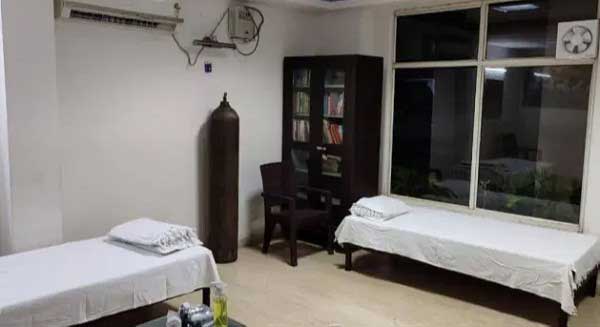 When Shonalika Ghosh’s father tested positive for COVID-19 in India’s capital New Delhi, she had to monitor his symptoms and coordinate remotely from Dubai, where she lives. Along with friends and family who helped deliver medicines and supplies, it was the support of the managing committee of the apartment complex that was particularly reassuring.
When Shonalika Ghosh’s father tested positive for COVID-19 in India’s capital New Delhi, she had to monitor his symptoms and coordinate remotely from Dubai, where she lives. Along with friends and family who helped deliver medicines and supplies, it was the support of the managing committee of the apartment complex that was particularly reassuring.
New Delhi.- “For my sister and me, both living outside India, it was comforting when the committee monitored my father’s health daily, called with regular updates, and assured us that they were equipped with oxygen concentrators for an emergency,” Ghosh told Al Jazeera. Fortunately, her father did not require emergency assistance but Ghosh was relieved to have the support, knowing that New Delhi was facing an acute shortage of hospital beds, medical oxygen, medicines, and other essentials.
With India’s health infrastructure overwhelmed during the pandemic’s second wave, several resident welfare associations (RWAs), representative bodies of residents within a housing community across urban India have taken matters into their own hands, repurposing spaces such as gymnasiums or community halls into isolation or emergency rooms, buying oxygen concentrators and cylinders, arranging meals for the quarantined residents and organizing testing and vaccination camps.
Many RWAs began to put such processes in place during the first coronavirus lockdown in March last year, knowing that the virus could spread rapidly in apartment complexes, with thousands of residents in living proximity, using common elevators and recreational spaces.
“Last year the focus was on helping residents through the lockdown. This second wave was about saving lives with the health infrastructure crumbling outside,” Shivani Singh, RWA secretary at a 364-apartment complex in Gurugram, a city neighboring New Delhi, told Al Jazeera.
The arrangements include buying three oxygen concentrators, supplemented by a few private ones owned by the residents, a 24/7 COVID-19 helpdesk for requests for ambulances, medicines, and tests, and monitoring quarantined patients with the help of resident volunteers in case of potential emergencies.
With hospitals facing acute oxygen shortages during a ferocious second wave of the virus in India, by the middle of May health facilities were calling out for an extra 15.5m cubic meters of oxygen every day, 14 times more than in March for COVID-19 patients. As desperate families scrambled for oxygen cylinders, many patients suffocated, needing an uninterrupted supply of the life-saving gas.
An estimated 40 percent of India’s total number of reported COVID-19 deaths have occurred since the beginning of March. The total number of death due to the virus reached 329,100 on Friday.
In Noida, another city outside New Delhi, an upscale housing society bought 10 oxygen concentrators and cylinders, handed out free PPE kits to those who needed them, and maintained a digital record of medicines available.
With more than 4,000 residents, the association cordoned off the complex’s communal recreational areas after 20 COVID-19 cases were reported. At one point, infections in the housing block stood at 245. “Several residents protested initially but had we not done this we would have had even more cases,” said Zubin Singh Dhindsa.
The preparations by the housing societies helped many receive life-saving care. “A resident’s health deteriorated recently and there was a shortage of oxygen and hospital beds. We provided our oxygen supplies to him at home for four days, during which he stabilized and did not need to be shifted to a hospital,” said Singh. (RHC)






